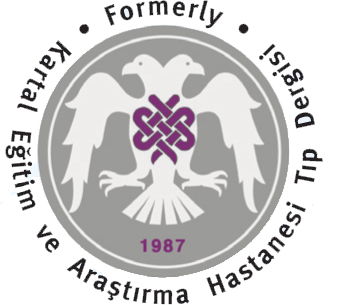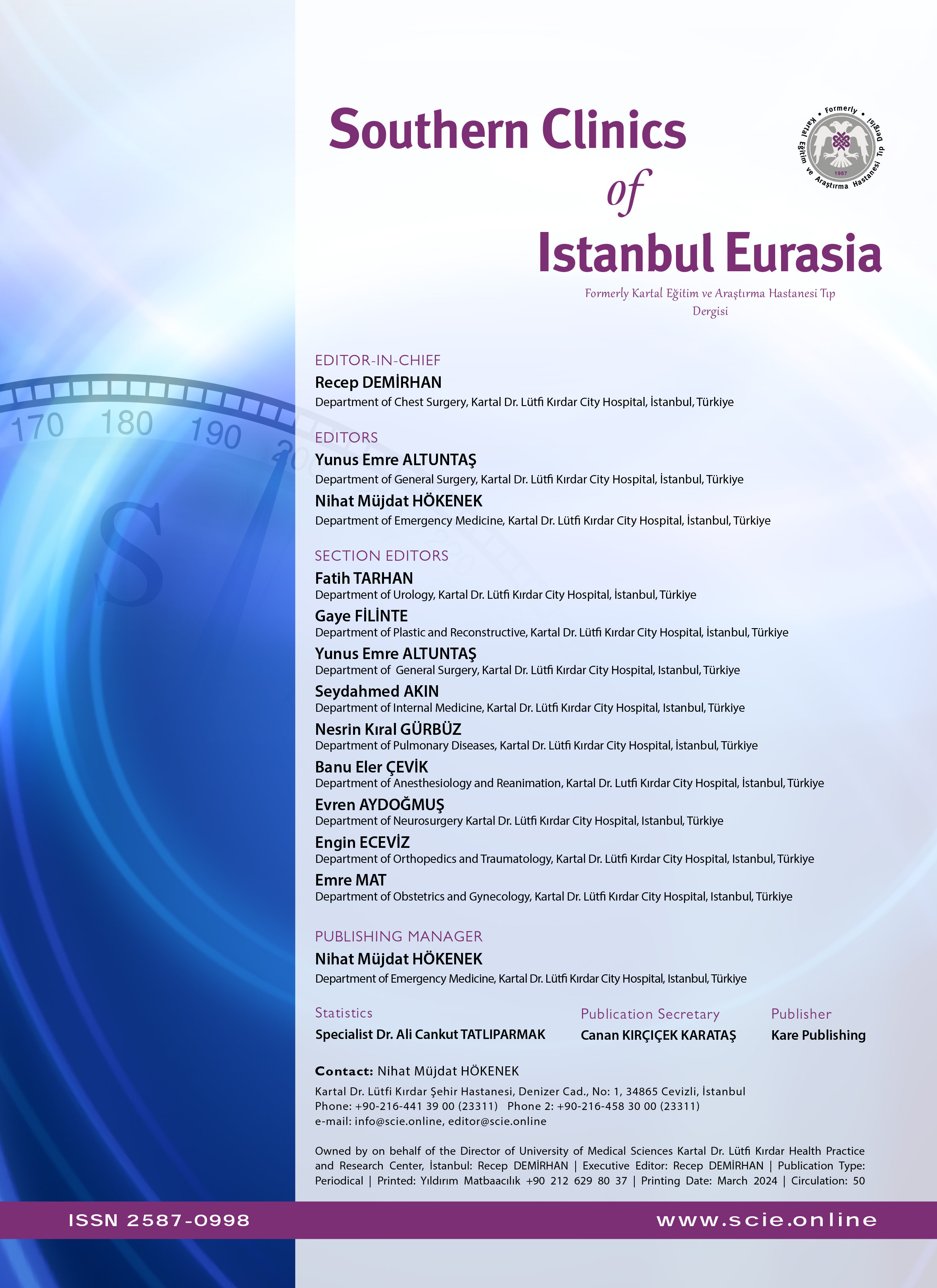ABLATIO PLACENTA: THE RESULTS OF MATERNAL AND PERINATAL ANALYSIS OF NORMOTENSIVE AND HYPERTENSIVE PATIENTS
Erdal Eskiçırak1, Karsel Ertekin1, Serap Yaltı1, Vedat Dayıcıoğlu1Zeynep Kamil Kadın ve Çocuk Hastalıkları Hastanesi120 patients who were operated with the diagnosis of plasental abruption between January/I/1997 and January/1/1998 at Zeynep Kamil Women and Children's Hospital Obstetric Clinic consisted the study group. Cases were sub grouped as hypertensive or normotensive. In our hospital the number of deliveries was 20341 and the number of ceaserian sections was 3558 (%77.49). 821 patients were hospitalized for preeclampsia. %25 of the patients (n=30) with plasental abruption were hypertensive. % 40 of the cases (n=12) with hypertention has grade-III plasental abruption, ie plasental abruption resulting in fetal death, this rate was % 19 (n=17) in the normotensive group. The difference was found to be statically significant. % 15 of the neonates born to hypertensive mothers died in the early neonatal period. Perinatal mortality was % 50 (n=15) in the hypertensive group and %31.1 (n=28) in the normotensive group. The difference between the two groups was statically significant. In the hypertensive group, the rate of term neonates was low % 3.33 (n=l) whereas the rate of small for gestational age neonates was significantly high compared to those of the normotensive group. The 1st and 5th minute Apgar scores were not significantly different. In %15 (n=18) of 120 cases there was a history of vaginal bleeding in the first trimestr. Placental abruption is an important cause of perinatal mortality. In hypertensive cases in whom the uteroplacental perfusion is affected the mortality increases. Hypertension may be both a predisposing factor and the cause of placental abruption.
Keywords: ABLATIO PLACENTA, PREEXLAMPSIA, HYPERTENSIONABLASYO PLASENTA: NORMOTANSİF VE HİPERTANSİF HASTALARDA MATERNAL VE PERİNATAL ANALİZ SONUÇLARI
Erdal Eskiçırak1, Karsel Ertekin1, Serap Yaltı1, Vedat Dayıcıoğlu1Zeynep Kamil Kadın ve Çocuk Hastalıkları HastanesiZeynep Kamil Kadın ve Çocuk Hastalıkları Hastanesi Doğum Kliniğinde 0l/Ocak/1997 - 01/Ocak/1998 tarihleri arasında ablasyo plasenta tanısıyla sezeryan operasyonuna alınan hastalar (n=120) çalışma grubunu oluşturdu. Olgular hipertansif ve normotensif olarak iki gruba ayrıldı. Hastanemizin bir yıllık doğum sayısı 20341, sezeryan operasyonu sayısı 3558 (%17.49) dir. Preeklampsi tanısı ile hastanemize yatırılan hasta sayısı 821{%4.9)dir. Ablasyo plasenta tanısı almış olguların (n=120) %25'ini (n=30) hipertansif hastalar oluşturmaktaydı.Ablasyo plasenta Grade-III olgular (fetal ölümün olduğu olgular) hipertansif grupta %40.1 (n=12), normotensif grupta %19 (n=17) olarak saptandı. Fark istatistiksel olarak anlamlı bulundu. Hipertansif olgulardan doğan yeni doğanların % 15'i, hipertansiflerin %16.6' sı (n=3) erken neonatal dönemde ex oldu. Perinatal mortalite hipertansif grupla % 50 (n=15), normotensif grupta %31,1 (n=28) olarak bulundu. Fark istatistiksel olarak anlamlı idi. Hipertansif grupta term yeni doğan oranı düşük %3.33 (n=1), SGA oranı %36.66 (n=11) belirgin olarak yüksek bulundu. Yeni doğanların 1, ve 5. dakika apgar skorları arasında istatistiksel olarak fark bulunmadı. 120 olgumuzun % 15 inde (n= 18) ilk trimestrede vaginal kanama öyküsü vardı. Ablasyo plasenta perinatal mortalitenin önemli sebeplerinden biridir. Uteroplasenter perfüzyonun bozulduğu hipertansif olgularda bu oran daha da artmaktadır. Hipertansiyon ablasyo plasentada hem predispozan hem de nedensel bir faktör olabilir.
Anahtar Kelimeler: ABLASYO PLASENTA, PREEKLAMPSİ, HİPERTANSİYONManuscript Language: Turkish



















